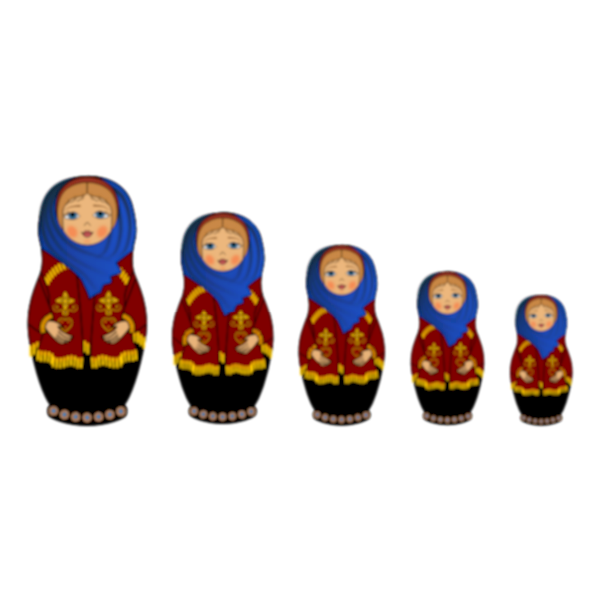Dilations
Dilation transforms the size of an object without altering the shape or orientation of the object from its original state. This transformation requires a center point and a scale factor denoted with, k. The center point could be located anywhere about the cartesian plane including within the original object.


The scale factor determines whether the dilation is an enlargement or reduction. If |k|>1, then the transformation is an enlargement and the object would grow in size at the specificed scale factor. If |k|< 1, the transformation is an a reduction and the object would shrink in size at the specified scale factor.
The shape and orientation of the object is not affected by either of these transformations. Because dilations directly affect the size of a transformed object, dilations are not defined as rigid transformations. Out of the four transformations highlighted and explored on this website, dilations is the only non-rigid transformation.
Reducing or enlarging an image electronically is a great example of a dilation. This is shown through the enlargment of the flowers to the right. The center point of the enlargement was in the middle of the flowers and the scale factor was k = 3. Other examples of dilations include russian nesting dolls, (as long as each russian nesting dolls is similar in shape, styling, etc.) and the reduction or enlargement of a pupil within an eye due to differing light conditions.
Can you think of any examples of objects that follow the definition of dilations? What about nonexamples of dilations?
The shape and orientation of the object is not affected by either of these transformations. Because dilations directly affect the size of a transformed object, dilations are not defined as rigid transformations. Out of the four transformations highlighted and explored on this website, dilations is the only non-rigid transformation.

Reducing or enlarging an image electronically is a great example of a dilation. This is shown through the enlargment of the flowers to the right. The center point of the enlargement was in the middle of the flowers and the scale factor was k = 3. Other examples of dilations include russian nesting dolls, (as long as each russian nesting dolls is similar in shape, styling, etc.) and the reduction or enlargement of a pupil within an eye due to differing light conditions.
Can you think of any examples of objects that follow the definition of dilations? What about nonexamples of dilations?
If an object is dilated, either enlarged or reduced in size by a scale factor, and the shape is altered it is a not a dilation. To provide some visuals on this concept here a some nonexamples of dilations: melting snowflakes, blooming flower, and popping a popcorn kernel. When the snowflakes melt they lose their structure and change shape so while the size shrunk it is not a reduction. A blooming flower may get bigger as it grows but it is not an enlargement because the petals are not the original bud of the flower. Similarly, a popcorn kernel popped into popcorn may have grown in size, the shape was changed during the process so it is not, by definition, a dilation.
Here is an applet applet constructed by Ben Graber using the software Geogebra to help explore the different dilation transformations.
Check out this video for more practice with dilation!
Here is an applet applet constructed by Ben Graber using the software Geogebra to help explore the different dilation transformations.
Check out this video for more practice with dilation!